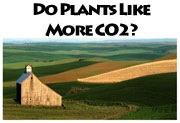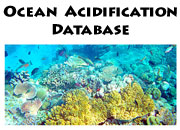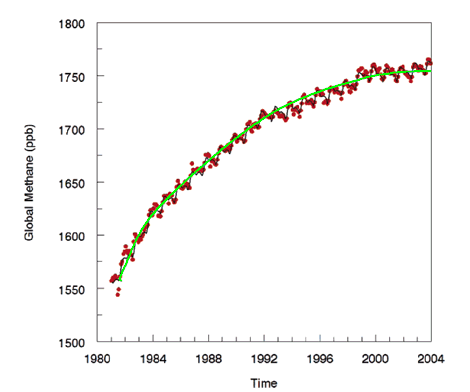Reference
Khalil, M.A.K., Butenhoff, C.L. and Rasmussen, R.A. 2007. Atmospheric methane: Trends and cycles of sources and sinks. Environmental Science & Technology 10.1021/es061791t.
Background
The Intergovernmental Panel on Climate Change (IPCC) has long predicted that earth's tropospheric methane (CH4) concentration would rise dramatically throughout the 21st century; see, for example, Ehhalt and Prather (2001). So entrenched a place did this dogma come to occupy in both the popular and scientific psyches, in fact, that when real-world data suddenly suggested otherwise, Simpson et al. (2002) continued to vehemently contend it was "premature to believe that the CH4 burden is ceasing to increase," even though their own data bore witness against them in demonstrating that such was in fact occurring, as we indicated in our Editorial of 8 Jan 2003. Newer findings, however, ultimately caused even them to recant (Simpson et al., 2006); and, now, Khalil et al. (2007) have essentially "put the nails in the coffin" of the idea that rising atmospheric CH4 concentrations pose any further global warming threat at all.
What was done
The three Oregon (USA) researchers combined two huge atmospheric methane data sets to produce the unified dataset depicted in the figure below.
Figure 1. Global methane (CH4) concentration. Adapted from Khalil et al. (2007).
What was learned
In viewing the figure above, to which we have added the smooth green line, it is clear that the rate of methane increase in the atmosphere has dropped dramatically over time. As Khalil et al. describe it, "the trend has been decreasing for the last two decades until the present when it has reached near zero," and they go on to say that "it is questionable whether human activities can cause methane concentrations to increase greatly in the future."
What it means
Although some diehards are contending that the atmospheric methane concentration will start to increase again in the next few decades, it is equally valid (at least) to suggest that after reaching its apogee, the atmosphere's methane concentration will actually begin to drop. This has been our position all along; and if it proves to be correct, the decreasing trend in atmospheric CH4 concentration will begin to provide a counter-greenhouse force to that created by the rising atmospheric CO2 concentration. And if the decline in CH4 becomes substantial enough, it could well do more to decrease the potential for future global warming than all our many human efforts to curtail anthropogenic CO2 emissions.
References
Ehhalt, D.H. and Prather, M. 2001. Atmospheric chemistry and greenhouse gases. In: Climate Change 2001: The Scientific Basis, Cambridge University Press, New York, NY, USA, pp. 245-287.
Simpson, I.J., Blake, D.R. and Rowland, F.S. 2002. Implications of the recent fluctuations in the growth rate of tropospheric methane. Geophysical Research Letters 29: 10.1029/2001GL014521.
Simpson, I.J., Rowland, F.S., Meinardi, S. and Blake, D.R. 2006. Influence of biomass burning during recent fluctuations in the slow growth of global tropospheric methane. Geophysical Research Letters 33: 10.1029/2006GL027330.
Reviewed 14 March 2007




